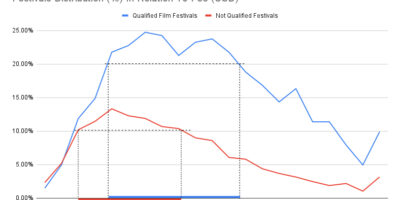We often hear that a movie is a “classic” or that it has a “cult following.” They both sound like successful films, but they are actually very different. Understanding the difference is like understanding why a famous museum painting is not the same as a beloved, quirky poster in a fan’s bedroom. However, we must bear in mind that there is no clear boundary, and many films are considered both classics and cult films at the same time.
A classic film is like a respected king. It is widely admired and praised by almost everyone. When a movie becomes a classic, it means it has won the approval of critics, the industry, and the general public. These films are known for their high quality, brilliant acting, and powerful storytelling. They often win awards and are studied in schools. Think of movies like The Godfather or Casablanca. They are timeless, and their greatness is universally accepted. You watch a classic to appreciate a masterpiece.
On the other hand, a cult film is like a secret rebel leader. It is not loved by the mainstream audience at first. In fact, it might have been a complete failure when it was released. Cult films find their audience slowly, often through late-night TV showings, video rentals, or the internet. Their fans don’t just like these movies; they love them with a passionate, almost obsessive energy. They form a community around the film.
The charm of a cult film is often in its imperfections. It might have strange dialogue, weird acting, or a bizarre plot. But these flaws are exactly what fans adore. They quote the lines, dress up as the characters, and watch the movie together at special events. Films like The Rocky Horror Picture Show or The Big Lebowski are perfect examples. Their appeal is not always about perfect art; it’s about a unique personality that connects deeply with a specific group.

Dad Man by Jim Jarmusch is considered by many lists to be a cult classic.
So, the main difference is this: a classic is a film that everyone is supposed to respect, while a cult film is one that a dedicated group chooses to love. A classic is celebrated for its universal quality and achievement. A cult film is cherished for its unique heart and the personal connection it creates with its fans. One is a grand monument for all to see, and the other is a special, secret handshake shared among friends. Both are important, but they live in very different parts of our movie-loving hearts.
It should also be noted that many famous directors started out with short films, which later became cult feature films or contained references to classic cinema. For instance, the short film Alive in Joburg later became the basis for a feature film District 9 (2009) by Neill Blomkamp. A student film Peluca (2003) starring Jon Heder became the basis for the cult comedy Napoleon Dynamite (2004) by Jared Hess. Then a 9-minute horror film Saw (2003) was created by James Wan as a pitch for studios. It launched the massive “Saw” horror franchise (2004). A striking example is a same title black-and-white comedy about inept robbers. It helped launch Wes Anderson’s career and became his first feature-length film, “Bottle Rocket” (1996).















